[FRB-Cesab] Newsletter 10 CESAB – January 2024
The FRB’s Center for Biodiversity Synthesis and Analysis (CESAB) is a research structure with an international scope whose objective is to implement innovative work on the synthesis and analysis of existing data sets in the field of biodiversity. Twice a year, the CESAB publishes a newsletter listing the different news and activities going on.
Editorial

Faced with the booming of environmental challenges, the need to carry out rigorous and independent synthesis on biodiversity data has never been so high. With CESAB, the Foundation for Biodiversity Research is proud to offer a place where this synthesis is made possible, with the support of its founding members. We can now provide the scientific community with regular calls for proposals, combining “classical” SYNTHESIS calls and DATASHARE calls. The latter opened in 2023 and has proved very popular among the scientific community, once again showing its maturity regarding the importance of bringing together open access biodiversity databases to the biggest number.
We’d also like to celebrate the success of Sandra Lavorel, former member of FRB’s scientific council and member of CESAB DIVGRASS group, who recently won the prestigious CNRS gold medal, and Lucie Mahaut, post-doc for the FREE2 group, and winner of the young researcher award for the French society of ecology and evolution. These prizes are showcasing the cutting edge biodiversity research carried out in France, the maturity level of its scientific community and its recognition by the most regarded scientific bodies, an excellence to which FRB and its CESAB, are contributing.
Finally, FRB’s and CESAB’s heads would like to address their warmest wishes to the whole of CESAB’s team, which constitutes the buzzing heart of our center. Their expertise, engagement and passion, contribute to making CESAB a dynamic and innovative place for biodiversity research: they are the pillars of our successes and advances. To all, huge thanks for your constant work and engagement in our mission. Finally, we’d like to warmly welcome Maija Mikkola, who recently joined our administrative team, welcome Maija!
Together, the FRB and its CESAB, thanks to the continuous support and its founding members and partners, will continue its mission and provide the scientific community with the direct and indirect means to advance biodiversity synthesis, which is key to the wider community of stakeholders. The key role of data synthesis and biodiversity knowledge makes CESAB more relevant than ever.
Several hundreds of reserachers have come to work at CESAB:
Since July 2023, CESAB has kept a sustained rhythm and has hosted not less than 18 weeks of CESAB group meetings, one plenary meeting of CESAB’s scientific committee, one plenary meeting of FRB’s scientific council, the second meeting of ocean priority research program, and a meeting for the Urban Health project.
In addition to these meetings, CESAB is strengthening its workshop activities and has hosted two workshops, “Systematic reviews” and “Best practice for reproducible research in computational ecology”, during the same period, and another workshop organized by the Biodiversity Data National Centre (PNDB) and in collaboration with MNHN and CESAB.
Finally, CESAB welcomed Jean-Paul Metzger (FAPESP) part time and during two months, during his sabbatical in Montpellier as part of a MAK’IT funding by Montpellier’s University.
This activity, and the research that emanates from it, greatly contributes to advancing biodiversity data analysis: this year, CESAB-related publications have reached the 300 threshold!
Several CESAB groups are preparing “Afters” or another extension of their projects via external fundings:

DIVERS, which initial project officially ended in autumn 2022, met again in October 2023, with the support from CNRS, and will gather again in spring 2024 with the support of Brittany’s county, in order to prepare a Doctoral Network application.
Four other CESAB groups, which projects officially ended in 2023 are preparing their Afters at CESAB for 2024.
FISHGLOB, project of the United Nations Ocean Decade (UN OD), should gather again in CESAB in 2024, with the support from the French embassy in Canada and Montpellier’s University.
Our best wishes to Erica and Stéphanie, who are joining new research teams, congratulations to them both!
- Erica RIEVRS BORGES, post-doc of BRIDGE project, ended her contract and started a new post-doc position within the AMAP lab in Montpellier thanks to a Curie grant.
- Stéphanie D’AGATA was recruited for a permanent position at IRD and thus ended her post-doc with BLUE JUSTICE. She will however remain an active member of the group and Angelee ANNASAWMY was recruited to take over as data scientist for the group.
- Andrew HELMSTETTER, our first onsite “CESAB postdoc”, is also leaving us after almost 4 years of work on CESAB projects DIVERS and INDICATORS, all the best Andrew!
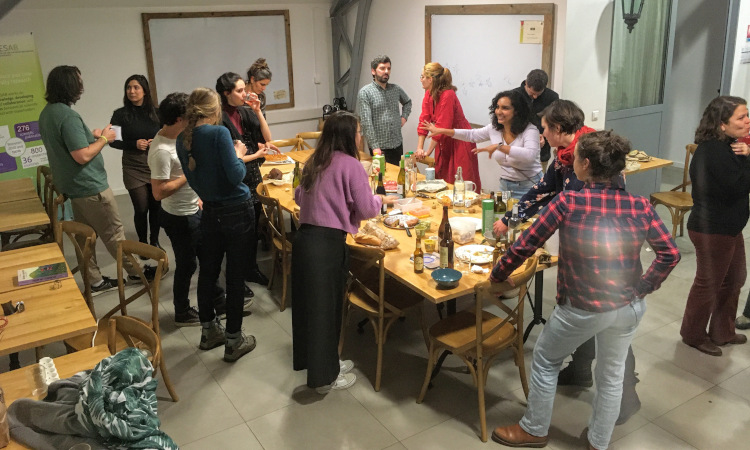
Projects selected from the spring 2023 calls for proposals are now announced! They will start in 2024.
Four projects selected for the DATASHARE call:
- DYNAMITE, DYNAMics of the production and export of aragonITE shells, Julie MEILLAND (Bremme University, Germany) and Olivier SULPIS (CNRS, France)
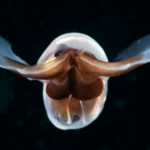
- FAIRWOOD, Development of an international database based on FAIR principles to host xylogenesis data and improve understanding of wood formation and woody biomass production in the face of climate change, held by Cyril RATHGEBER (INRAE, France) and Patrick FONTI (WCL, Switzerland)
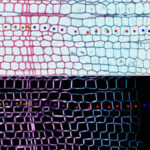
- FARsex, Fish, Amphibian, and Reptile Sex Ratios under climate change scenarios, Veronika BOKONY (HUN-REN Centre for Agricultural Research, Hungary) and Benjamin GEFFROY (IFREMER, France)
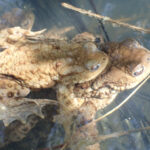
- InvaHealth, Global human health costs from biological invasions, Christophe DIAGNE (IRD, France) and Guillaume LATOMBE (Edinburgh University, UK)
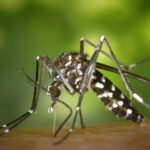
Hold on just a little longer for the results of 2023 FRB-MTE-OFB call for proposals…
Projects are currently under examination, and the final selection will be announced towards the end of March. We’re hoping to have 3 new SYNTHESIS projects, which would bring up to 31 the number of projects running in 2024.
In 2024, CESAB should host four “After” meetings
In addition to DIVERS, we are expecting the return of FORCIS, JUSTCONSERVATION and SCORE REEF, which were all selected as part of the 2018 SYNTHESIS call. The groups are currently working on their After project to gather one more time at CESAB during the year.
- Finally, FISHGLOB, selected from the first CIEE/FRB joint call and elected United Nation’s Ocean decade project, will come back to CESAB, with the support of French embassy in Canada, in November after they’ve had a first “After” meeting in Vancouver last spring
Launching CESABINARs!

This new initiative aims at highlighting key results of groups that are ending their CESAB cycle. During these webinars open to all, principal investigators will present their work and main results for 40 minutes, which will be followed by a question and answer session. These seminars will be registered and made available to the wider scientific community.
The second edition of the call for participation of a Canadian researcher to a CESAB workshop was opened last December. Funded by the French embassy in Canada and launched by the Canadian Institute of Ecology and Evolution (CIEE), this call is open for applications until 14th February 2024. https://www.ciee-icee.ca/apply.html
The successful applicant will be announced in March, and will receive funding to take part in a CESAB workshop between April 2024 and March 2025.

From January onwards, 5 new postdocs will join the crew!
Mithila UNLUKE (BIOFOREST), Clara MARINO (RIVAGE), Angelee ANNASAWMY (BLUE JUSTICE), Miriam BECK (IMPACTS), and Cassie SPEAKMAN (DISCAR), from May.
Chloé VAGNON, a FOOD-WEBS postdoc, already joined the consortium thanks to the support of Toulouse University, which allowed her to take part in the group’s first meeting in September, and she will move to CESAB towards the end of 2024.
Aaron SEXTON (NAVIDIV) and Brunno OLIVEIRA (FRAGSHIFTS) both obtained a 10-month extension of their post-doctoral fellowships, for which the whole CESAB team is delighted.
Find out about all CESAB projects
Faced with the success of already-existing courses, CESAB is strengthening and expanding its training courses. Two new sessions are due to begin in 2024, bringing up to 5 the number of workshops offered by CESAB.
March : Theory-driven analysis of ecological data / 3rd edition 11th-15th March 2024

- This workshop, organized in partnership with the TheoMoDive thematic network, is centered around building and analyzing mathematical models to help better understand ecological data. This course emphasizes a process-driven approach based on ecological theory.
April : Analysing ecological network data (in English) / First edition 22nd-26th April 2024

- The objective of this course is to introduce participants to the analysis of ecological network data. The course covers a general introduction to networks, classical metrics, null models, generative models and an overview of other techniques, by mixing theory and practical case studies.
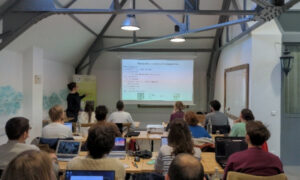
October : Biodiversity knowledge synthesis : an introduction to meta-analyses and systematic reviews / 3rd edition to be held in 2024

- This workshop, organized in partnership with members of two systematic review groups (InDySEM and Agri-TE) and the mixed research unity PatriNat focuses on meta-analyses techniques and reviewing and mapping methods applied to biodiversity data.
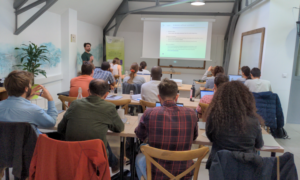
November : Biodiversity data: from acquisition to openness / first edition in 2024

- Organized in partnership with the Biodiversity Data National Center, this brand-new course will offer a whistle-stop tour of data management in biodiversity, from its acquisition to its open access, including its standardization, archiving and publication of a data paper and data management plan. Pre-registrations will open in spring.
December : Best practice in reproducible research in computational ecology / sixth edition to be held in 2024

- Co-organized with the thematic network EcoStat, this workshop trains young researchers in reproducibility, software development and version management (Git, GitHub, R Markdown, Quarto, renv, Docker, etc.) applied to biodiversity research. Pre-registrations will open in spring.
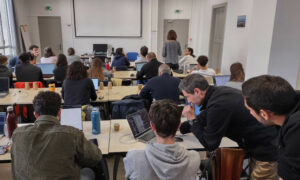
Find out more about expanding your skills at CESAB
Lucie Mahaut, postdoc of CESAB group FREE2, and winner of the French Society of Ecology and Evolution 2023 young researcher award, revisits her research with us.

- Hi Lucie, can you tell us about your research?
My research is centered around functional ecology, a field that studies the adaptation of organisms to their environment their roles within ecological communities, and the way they contribute to regulating biogeochemical cycles. I am particularly interested in the way biodiversity influences the functioning and stability of ecosystems at varying spatial and temporal scales. I tackle biodiversity through the lenses of functions played by organisms (the so-called “functional biodiversity”), which allows me to take into account both the adaptations of organisms to environmental changes, and their effects on the structure and dynamics of ecosystems. Functions of organisms are estimated from morphological and physiological characteristics (or functional traits), which are today centralized within international databases for most taxonomic groups (plants, vertebrates, invertebrates, micro-organisms).
I’ve been recently working on the concept of functional rarity, which lies at the heart of the research carried out by CESAB group FREE (Functional Rarity in Ecology and Evolution), led by Cyrille Violle and of which I am the affiliated postdoc. This concept defines species rarity not only based on their distribution (abundance, frequency), but also based on their functional traits. Functionally rare species host, by definition, distinct combinations of functional traits compared to other species within an ecosystem. I have notably shown that these species play a prominent role in regulating the productivity and stability of ecosystems, whether it be agro-ecosystems or coral reefs. These results, and more generally the research carried out by FREE, suggest that functional rarity, given its role in the proper functioning of ecosystems and Nature’s contribution to people, should be considered more explicitly in biodiversity conservation programs.
- How do you study functional diversity through biodiversity data synthesis?
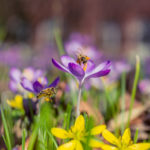
When faced with the current environmental challenges, studying the way that functional diversity in general, and functional rarity in particular, contribute to regulating ecosystem functioning is a priority research field. Making this research generic requires access to large datasets encompassing heterogenous databases either in their structure or object (distribution, abundance, functional traits, ecosystem functioning, networks etc.). The biodiversity data synthesis identity cultivated at CESAB facilitates the access to and manipulation of such datasets, from the identification of rabbit holes worth avoiding to the discovery of patterns that would not have emerged with more modest databases. This synthesis work has paved the way for a new research field centered around functional diversity, a theme which was for a long time relegated to small scale studies or experimental work. However, our database analysis approach does not exclude the experimental approach. On the contrary, in the specific case of our understanding of functional diversity, I remain convinced that these two approaches are complementary to one another.
- What has your integration to a CESAB group changed in your research?
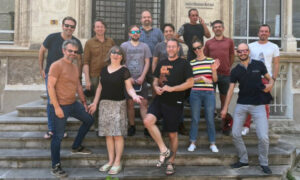
The FREE2 consortium was initiated in 2017. Over the years, the group has greatly gained in maturity thanks to the continuous inclusion of researchers from all horizons and origins. Joining this group has allowed me to, among other things, expand the framework of my research while diversifying both spatial scales and taxonomic groups related to my questions. The in-person one-week-workshops, held twice a year, are very strong moments in the group’s life, where ideas are buzzing and work links are being formed. It is striking to see the emergence of totally new ideas during these weeks, which are a very exciting and absolutely unique professional experience for young researchers.
- [Agri-TE] Bonfanti J, Langridge J & Beillouin D (2023) A global database to catalogue the impacts of agricultural management practices on terrestrial biodiversity. Data in Brief, 50, 109555. DOI: 10.1016/j.dib.2023.109555.
- [Bridge] Casajus N, Rievrs Borges E, Tabacchi E, Fried G & Mouquet N (2023) chessboard: An R package for creating network connections based on chess moves. Journal of Open Source Software, 8, 5753. DOI: 10.21105/joss.05753.
- [DiveRS] Anderson B, Pannell J, Billiard S, Burgarella C, De Boer H, Dufay M, Helmstetter AJ, Méndez M, Otto SP, Roze D, Sauquet H, Schoen D, Schönenberger J, Vallejo-Marin M, Zenil-Ferguson R, Käfer J & Glémin S (2023) Opposing effects of plant traits on diversification. iScience, 26, 106362. DOI: 10.1016/j.isci.2023.106362.
- [Fishglob] Coulon N, Lindegren M, Goberville E, Toussaint A, Receveur A & Auber A (2023) Threatened fish species in the Northeast Atlantic are functionally rare. Global Ecology and Biogeography, 32, 1827-1845. DOI: 10.1111/geb.13731.
- [Fishglob] Fredston AL, Cheung WWL, Frölicher TL, Kitchel ZJ, Maureaud AA, Thorson JT, Auber A, Mérigot B, Palacios-Abrantes J, Palomares MLD, Pecuchet L, Shackell NL & Pinsky ML (2023) Marine heatwaves are not a dominant driver of change in demersal fishes. Nature, 621, 324–329. DOI: 10.1038/s41586-023-06449-y.
- [Fishglob] Maureaud A, Palacios-Abrantes J, Kitchel Z, Mannocci L, Pinsky ML, Fredston A, Beukhof E, Forrest D, Frélat R, Palomares MLD, Pécuchet L, Thorson JT, van Denderen D & Mérigot B (2024) FishGlob_data: An integrated database of fish biodiversity sampled with scientific bottom-trawl surveys. Scientific data, 11, 24. DOI: 10.1038/s41597-023-02866-w.
- [Free] Coulon N, Lindegren M, Goberville E, Toussaint A, Receveur A & Auber A (2023) Threatened fish species in the Northeast Atlantic are functionally rare. Global Ecology and Biogeography, 32, 1827-1845. DOI: 10.1111/geb.13731.
- [Free] Mahaut L, Violle C, Shihan A, Pélissier R, Morel J, de Tombeur F, Rahajaharilaza K, Fabre D, Luquet D, Hartley S, Thorne SJ, Ballini E & Fort F (2023) Beyond trait distances: Functional distinctiveness captures the outcome of plant competition. Functional Ecology, 37, 2399-2412. DOI: 10.1111/1365-2435.14397.
- [IndySEM] Campagne CS, Roy L-A, Langridge J, Claudet J, Mongruel R, Beillouin D & Thiébaut É (2023) Existing evidence on the impact of changes in marine ecosystem structure and functioning on ecosystem service delivery: A systematic map. Environmental Evidence, 12, 13. DOI: 10.1186/s13750-023-00306-1.
- [Maestro] Coulon N, Lindegren M, Goberville E, Toussaint A, Receveur A & Auber A (2023) Threatened fish species in the Northeast Atlantic are functionally rare. Global Ecology and Biogeography, 32, 1827-1845. DOI: 10.1111/geb.13731.
- [Parsec] Specht A, O’Brien M, Edmunds R, Corrêa P, David R, Mabile L, Machicao J, Murayama Y & Stall S (2023) The Value of a Data and Digital Object Management Plan (D(DO)MP) in Fostering Sharing Practices in a Multidisciplinary Multinational Project. Data Science Journal, 22, 38. DOI: 10.5334/dsj-2023-038.
- [CESAB Members] Drapeau Picard A-P, Dieni A, Moreau A, Mitchell GW, MacNair ML, Casajus N, Charest S & Larrivée M (2023) Mission Monarch: engaging the Canadian public for the conservation of a species at risk. Journal of Insect Conservation, accepted. DOI: 10.1007/s10841-023-00540-5.
- [CESAB Members] Rault C, Leprieur F, Barbaro L, Kreft H, Mouquet N, Papaïx J, Sekercioglu CH, Violle C & Barnagaud JY (2023) Trait‐environment associations diverge between native and alien breeding bird assemblages on the world’s oceanic islands. Global Ecology and Biogeography, 32, 1773-1789. DOI: 10.1111/geb.13729.
- [CESAB Members] Suárez-Ibarra JY, Freire TM, Frozza CF, Pinho TML, Petró SM, Dias BB, Chalk TB, Chaabane S, Srivastava M, Costa KB, Toledo FAL, De Garidel-Thoron T, Coimbra JC & Pivel MAG (2023) Surface fertilisation and organic matter delivery enhanced carbonate dissolution in the western South Atlantic. Frontiers in Ecology and Evolution, 11, 1238334. DOI: 10.3389/fevo.2023.1238334.
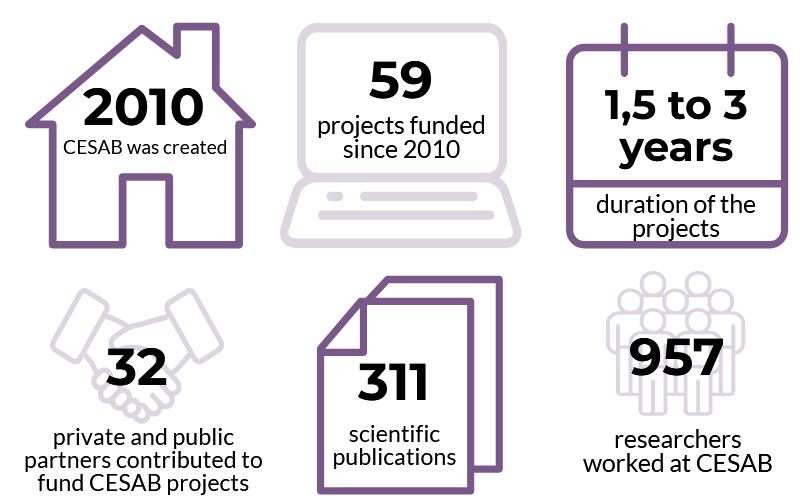
Pour recevoir directement les newsletters du Cesab, abonnez-vous !
Les précédentes newsletters :
– Juillet 2019 [ENG]